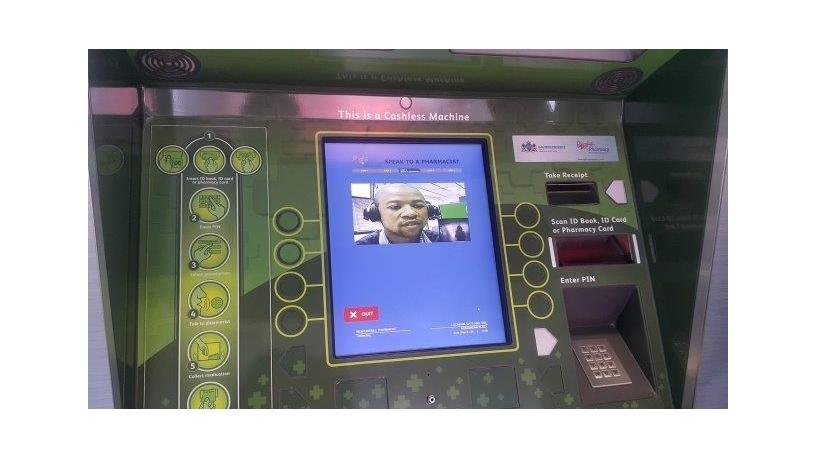
The Gauteng Department of Health, in partnership with Right to Care and Right ePharmacy, has launched a Pharmacy Dispensing Unit (PDU), which works like an ATM for medication.
The PDU, which was unveiled today in Alexandra township, Johannesburg, is said to be the first medical dispensing self-service machine in Africa. The aim of the cloud-based solution, according to Right ePharmacy, is to do quick last-mile dispensing of medication for patients with chronic illnesses, reducing congestion in public healthcare facilities.
Patients first go to the information desk where a pharmacist validates their medical script details and issues them with an identification card. The PDU allows patients with repeat prescriptions to return as often as required and use the self-service, with guidance from a tele-pharmacist who is available via the call centre.
Professor Ian Sanne, CEO at Right to Care, explains: "Our partnerships made this innovation possible and we are grateful to the Gauteng Provincial Health Department and for the contributions of USAID, GIZ who are implementing the project on behalf of the German Government and Mach4. The PDU was developed to ensure accurate dispensing and quick collection of medication. A clinically stable patient on chronic medication can be given the option to collect chronic prescriptions from the PDU pharmacy. While driven by sophisticated technology, patients' concerns and information needs are still handled one-on-one by tele-pharmacists.
"Alexandra Plaza, where our first PDU is located, is a central community shopping centre which is on transport routes and it is open on weekends and public holidays. Sites in Diepsloot and two other sites in Soweto have also been selected for the pilot of this public pharmacy programme."
The Alexandra pilot project was initiated in April last year.
Andre van Biljon, chief technical officer at Right ePharmacy, says the PDU uses cloud-based electronic software and robotic technology, which enables Skype-like audio-visual interaction between patient and tele-pharmacists who are made available through the call centre.
"The system runs on an electronic scripting cloud-based solution called ERX, together with the Microsoft.net platform. Additionally, there is a communication system which links the robotic call centre communication, allowing the tele-pharmacists to remotely push the dispensing button, which is a crucial transaction that takes place in real time. The entire process takes less than three minutes which is half of the time it takes a patient to get medication at an average pharmacy," notes Van Biljon.
Gauteng Health MEC, Gwen Ramokgopa, explains: "This is a great step forward for patients in our city as it dramatically reduces waiting times and congestion in public healthcare facilities. In Alex, there are eight primary healthcare clinics in the vicinity which refer patients.
"The system is run by qualified pharmacists and pharmacy assistants and integrates with the clinical management of patients with chronic conditions at public facilities. It also supports adherence. The date for the next collection is shown on the receipt the patient receives when collecting medication and prescription collection reminders are sent by SMS. Late collections are immediately flagged for follow up. It also offers patients service in all 11 languages and there is support at the site to help patients deal with the technology."
Fanie Hendriksz, MD of Right ePharmacy, comments: "This pharmacy enhances access to quality pharmaceutical services and improves patient convenience. The early benefits have shown valuable patient and community data trends that are needed to improve patient outcomes. The technology is making it easier for people with various illnesses to have access to medication, ultimately improving adherence."
Share